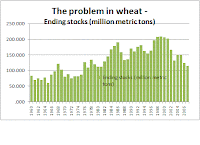“The euro is an inspiring currency”
ECB President Jean Claude Trichet
The dollar is hitting all time lows and ECB is calling the Euro “inspiring”. One hopes that there was a misunderstanding in the choice of words or the translation because calling the Euro inspiring misses the important point.
A currency is the relative price of two monies, so it could be that the Euro is inspiring or it could be that there is a loss of confidence in the dollar. After the last week of Fed behavior, it is more likely that the Euro has appreciated because the market is less inspired by the choices of the Fed.
Most empirical evidence suggests that the Euro will have a stronger reaction to US announcements than with European economic announcements. The driver of the Euro exchange rate will always be the combination of economic behavior in both region, but the line of announcement effects usually moves from the US to the rest of the world. The dollar is declining because of bad behavior and news in the US. It is not an issue of being inspired by the European economy.
Nevertheless, a growing confidence in the Euro will have strong impact on the behavior of many countries and commodities which have been tied to the dollar. For countries closely tied to the dollar, there is internal inflation. For commodities priced in dollars, there will be less impact from price rises. Non-dollar buyers are purchasing a commodity whose price is not rising as fast as in the US. Demand will not be curtailed as much as expected by looking only at the dollar price. This is an equilibrium that cannot be sustained. There will have to be further shifting away from dollar assets which will lead to further declines in the dollar.















